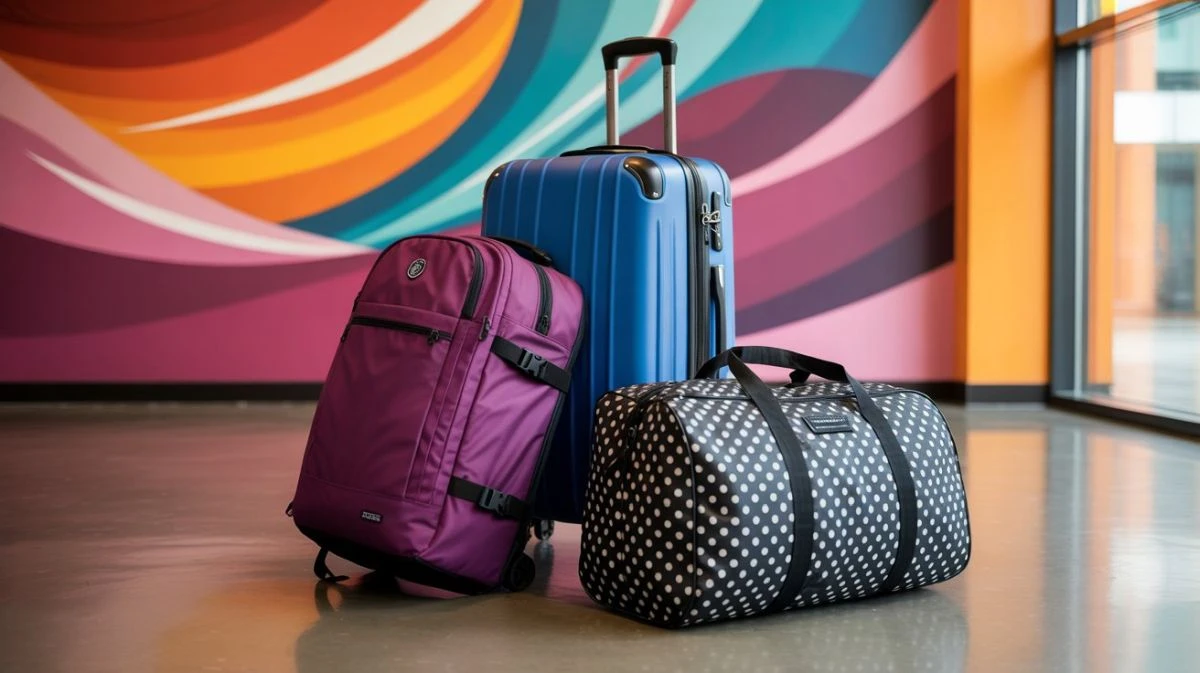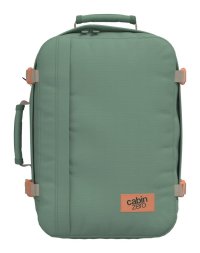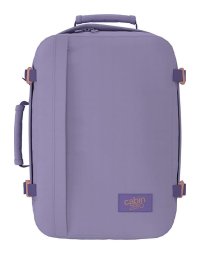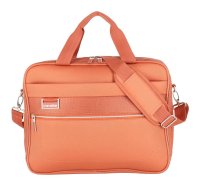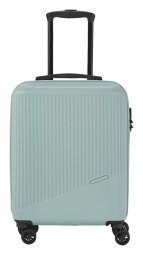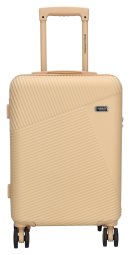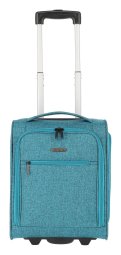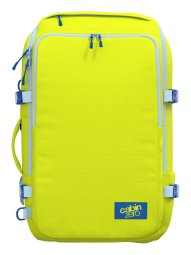Greetings to all travelers! Packing for a holiday or a business trip is an exciting ritual for many of us. But let's be honest, who among you hasn't had the thought cross your mind at least once: "Is my suitcase for the plane small enough? Won't I pay a fortune at the gate for oversized cabin luggage?" That's precisely why we've prepared this detailed article to guide you through the world of cabin luggage, its dimensions, and the rules that apply to it.
Together, we'll look at the difference between various types of luggage and how to choose the right carry-on suitcase for the plane that will become your faithful travel companion. Let's get to it, so your next trip to the airport is free of stress and unexpected fees!
In this article, you will learn:
- Cabin Luggage vs. Checked Luggage
- Small or Large Carry-on Luggage?
- Overview of Airline Limits
- Permitted Dimensions, Weight, and Correct Measurement
- What Happens When You Exceed the Limits?
- How to Choose the Right Cabin Luggage?
- Frequently Asked Questions (FAQ)
- Summary and Final Tips
Cabin Luggage vs. Checked Luggage: What's the Difference?
Before we dive into the details, let's clarify the basic terms. When traveling by plane, you'll encounter two main types of luggage: cabin (carry-on) and checked. Their main difference lies in where they "live" during the flight.
- Cabin Luggage (or carry-on/hand luggage): This is your companion that you can take on board the aircraft. You store it either in the overhead compartment or under the seat in front of you. This means you have it with you for the entire flight. It is precisely for this luggage that dimensions and weight are strictly controlled. Our article will focus primarily on this type.
- Checked Luggage: This is typically a larger travel suitcase for the plane (e.g., a medium suitcase M or a large suitcase L), which you hand over at the check-in counter. It travels in the cargo hold and you are reunited with it on the baggage carousel at your destination. The limits on size and weight are much more generous here, but you usually pay extra for its transport (unless your ticket includes it in the price).
Tip: If you fly often or with the whole family, consider buying a complete set of travel suitcases. You'll have matching luggage and often at a better price!
Small or Large Carry-on Luggage? Watch out for low-cost airlines!
To make things a bit more complicated, many airlines, especially low-cost ones like Ryanair or Wizz Air, further distinguish carry-on luggage into two categories:
- Small Carry-on (personal item): The price of the cheapest ticket usually only entitles you to one small bag. This could be a small backpack, a handbag, or a laptop bag. It must fit under the seat in front of you. The dimensions are very small, often around 40 x 25 x 20 cm or 40 x 30 x 20 cm.
- Large Carry-on: This is the classic cabin suitcase we all know. To take it on board with low-cost airlines, you often have to pay extra for a "Priority" service or purchase the larger bag separately. Its maximum dimensions are most often around 55 x 40 x 20 cm and the weight is up to about 10 kg.
It's crucial to always check the conditions of your specific ticket. Some traditional airlines still allow you to bring a larger cabin bag and a personal item included in the price of a basic ticket.
Overview of Cabin Luggage Limits for Airlines
To make your search easier, we have prepared a clear table. In it, you will find the current dimensions and weight for cabin luggage for the most common airlines. This table of permitted cabin luggage dimensions will help you quickly get your bearings and verify that your cabin luggage dimensions meet the requirements.
Permitted Dimensions and Weight are Key
Why do airlines insist so much on the dimensions and weight of cabin luggage? There are two reasons: safety and capacity. The space in the cabin is limited, and cabin luggage must fit safely into the overhead compartments. At the same time, the total weight of the aircraft is carefully calculated.
Standard Carry-on Dimensions: Is There a Universal Suitcase for Planes?
Many travelers look for a universal carry-on for the plane that will be accepted by every airline. The most commonly cited standard dimensions are 55 x 40 x 20 cm. A suitcase with these parameters will be accepted by most major airlines.
But beware! There is no officially defined universal size. Each airline sets its own rules. While one airline might let you pass with a 23 cm deep suitcase, another might see it as a problem. Therefore, it is absolutely essential to check the permitted carry-on dimensions directly with the airline you are flying with.
How to Properly Measure Your Travel Suitcase?
Measuring is not rocket science, but you need to pay attention to one crucial detail: The overall dimensions always include the external features of the suitcase!
- Height: Measure including the wheels, from the floor to the top of the retracted handle.
- Width: Measure at the widest point, including side handles or clasps.
- Depth: Measure including the front pockets.
The wheels and handles often add a few centimeters that can be decisive in whether your luggage meets the limits. Airports use metal sizers at the departure gates for checking – if your suitcase fits, you're good to go.
What Happens If My Luggage Exceeds the Limits?
This is the scenario every traveler dreads. You're at the boarding gate, and an employee asks you to place your carry-on suitcase into the sizing frame. And it doesn't fit. What now?
If your cabin luggage exceeds the maximum permitted dimensions or weight, you will have to check it into the cargo hold. And unfortunately, that's not free. The fee for checking luggage at the gate is significantly higher than if you had paid for checked luggage in advance online. Moreover, you risk having items in your suitcase that don't belong in checked luggage or items you will need during the flight (e.g., electronics, medication, valuables).
That's why it's really worth carefully checking the dimensions and weight before heading to the airport.
How to Choose the Right Cabin Luggage?
Choosing the ideal cabin luggage is an investment in stress-free travel. What should you focus on?
- Type of luggage: Don't limit yourself to just classic suitcases. A great and often more practical option can be a spacious travel backpack, which frees up your hands and is easier to carry, or a stylish travel bag, which can be very light and compact.
- Dimensions: The foundation of everything. If you often fly with low-cost airlines, consider luggage with maximum dimensions that exactly match their strictest limits (e.g., 55 x 40 x 20 cm).
- Weight: Every kilogram counts. Ultralight luggage allows you to pack more without exceeding the weight limit.
- Material:
- Hardshell suitcases (from polycarbonate, ABS) provide excellent protection for fragile contents but are less flexible.
- Soft-shell luggage (suitcases, backpacks, bags) often offer external pockets and are more pliable if you need to squeeze the luggage a bit.
- Wheels: Four spinner wheels provide unmatched comfort and maneuverability at the airport. Two-wheeled suitcases, on the other hand, might offer slightly more internal space.
At Bagalio, you will find a huge selection of cabin luggage for the plane that meets the limits of most airlines. Whether you are looking for an elegant hardshell case, a practical soft-shell cabin suitcase, a travel bag for the plane, or a lightweight travel backpack, we are here for you.
Frequently Asked Questions When Looking for Cabin Luggage
- What are the permitted dimensions for carry-on luggage?
The permitted dimensions for carry-on luggage vary by airline but are typically around 55 x 40 x 20 cm. It is important to check the specifications of your specific airline, as some, like Ryanair, may have stricter requirements. - What is the maximum weight for cabin luggage?
The maximum weight for cabin luggage also varies by airline but is usually between 7 and 10 kg. Ensure your carry-on does not exceed this limit to avoid additional fees. - What types of luggage can you take on a plane?
The types of luggage you can take on a plane include carry-on luggage, personal items (e.g., handbags or backpacks), and checked luggage. Each type has its own size and weight limits. - Why take carry-on luggage on board?
It's worth taking carry-on luggage on board because you can keep essentials like medication, electronics, or valuables with you. Checked luggage may be at risk of delay or loss. - What are the cabin luggage dimensions for Ryanair?
For Ryanair, the permitted cabin luggage dimensions are 40 x 20 x 25 cm for a small bag that you can take for free. A larger carry-on can be taken for an additional fee, with its dimensions not exceeding 55 x 40 x 20 cm.
Travel Smart and Stress-Free
We hope our guide to the world of cabin luggage has helped clarify things for you. Let's summarize the most important points:
- Always check the permitted dimensions and weight directly with your airline for your specific ticket.
- Distinguish between a small and a large carry-on, especially with low-cost airlines.
- Measure your luggage correctly – always including wheels, handles, and external pockets.
- Invest in quality cabin luggage that suits your travel habits. It will save you money and stress.
Packing everything you need into a small suitcase can be a challenge, but it's also an art that opens the door to cheaper and more flexible travel. Happy travels, and don't forget, you'll find the right luggage for the plane here at Bagalio!

